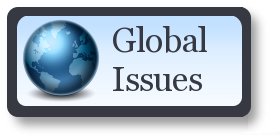 Illicit financial flows. Credit: IPS
Illicit financial flows. Credit: IPSNEW YORK, Oct 04 (IPS) - Khalid Saifullah, Fellow, Save Bangladesh USA Inc.The commonly used Bangla phrase for siphoning off money out of the country – "taka pachar" – is rather misleading. Because taka, the Bangladeshi currency, is never taken out of Bangladesh. It's not useful anywhere else. What goes out is its equivalence in foreign currencies, especially, US dollars. The technical term for such criminal act is Illicit Financial Flows (IFFs). Mistakenly, sometimes IFFs are referred to as money laundering – a processing of criminal proceeds to disguise their illegal origin.
Money laundering and illicit transfers of funds
Although there are some links between money laundering and IFFs, they are not the same activity. The United Nations Office on Drugs and Crime defines money laundering as "the conversion or transfer of property, knowing that such property is derived from any offense(s), for the purpose of concealing or disguising the illicit origin of the property or of assisting any person who is involved in such offense(s) to evade the legal consequences of his actions".
On the other hand, Illicit financial flows (IFFs) refer to illegal movements or transfers of money or capital from one country to another. However, sources of such funds may not be illegal (e.g., corruption, smuggling).
In practice, IFFs can also involve ill-gotten money – the worst case as in Bangladesh. The billions of dollars that were taken out of the country were mostly obtained through corruption and stealing of public funds.
How do illegal fund transfers happen?
Nearly US$3.15 billion flows out illicitly from Bangladesh annually. If a common person wants to travel abroad with a few hundred of thousand dollars, they can simply slip it in their pocket and catch a flight which is perfectly legal if that amount is within the legal limit of a country. For example, one can legally take out a maximum of AUD10,000 out of Australia (or bring in) without having to make declaration. For Bangladesh, it is only USD5,000.
But cronies of the Hasina's kleptocratic regime robbed and transferred millions and billions of dollars. According to a recent report, close to US$150 billion was siphoned off the country during 15 years of kleptocratic Hasina regime's mis-rule. So, they must have carried out these very illegal activities through legal channels. How did it work though?
Well, it's very difficult to know for sure, but it is believed that most IFFs happen through trade mis-invoicing or trade-based money laundering. Let's try to understand the design with an example.
Let's say, you want to launder one million dollars. Either you or your accomplice have an export-import business. Let's say you need to import 10,000 units of a product each costing $50. But instead of $50, you declare that their unit value was $150. By "securing" assistance from some key people within the authorities, you get Bangladesh Bank to transmit one and half million dollars as the payment for your grossly over-declared imports to a foreign company you set up for this purpose. You pay the exporter half a million dollars for your legitimate imports, and in the process, you have succeeded in laundering the one million dollars you wanted to get out of Bangladesh. The same can be done for exports but in reverse. This is of course a simplistic example and there can be many creative variations of this menace.
There are reasons to believe that this happened a lot in the case of Bangladesh. Why? Well, to begin with, Bangladesh does have a vibrant export-import sector which can make trade-based money laundering accessible and difficult to trace. Secondly, many of Hasina's cronies themselves were involved in international trading. Thirdly - and I don't think many people know this - Bangladesh stopped sharing detailed international trade data with the UN after 2015. There can of course be other explanations for this, but the timing nevertheless raises questions. UN Comtrade, world's largest source of international trade data, has data on most countries in the world but not Bangladesh, world's eighth largest population and thirty-fifth largest economy.
We need detailed trade data
International trade data has the special characteristic that it's a two-sided account. Bangladesh's export of cotton T-shirts to US is also US' import of cotton T-shirts from Bangladesh. In practice, there are some other factors at play but overall, this is how it is. Users can easily compare international trade data and any glaring disparities become immediately apparent.
One could argue that this still could be done since Bangladesh Bureau of Statistics (BBS), Exports Promotion Bureau (EPB) and Bangladesh Bank (BB) all publish external trade data. It would seem so but that's not really the case. Without going into much details, the data published by these agencies lack the necessary details to be comparable. Their data is at an aggregated level and not disseminated in a comparable manner. EPB doesn't even publish imports data (it's probably not in their mandate).
Then, there's the issue of accuracy. Weeks before Sheikh Hasina's ouster, BB revised exports data stating that EPB's figure was 10 billion USD higher than actual exports. The Chief Adviser Muhammad Yunus in his most recent address to the public promised to publish accurate trade data. It is a very necessary and welcome step. However, it is not sufficient. We need the necessary details in the data to allow for comparison with our trading partner countries' data. In particular, we need:
- Data by calendar year (Jan-Dec) and not only fiscal year.
- Data by monthly frequency.
- Breakdown by commodity codes up to at least HS (Harmonized System) 6-digits level. There are around 6,000 HS 6-digits codes available from the World Customs Organization (WCO). These codes can specify a commodity with sufficient details.
- Commodity descriptions.
- Breakdown by trading partner (ISO codes for country of origin for imports, country of last known destination for exports).
- Breakdown by country of consignment (ISO codes for any third country the commodities may have passed through).
- Mode of transport (sea, air, road, rail, etc.).
- Breakdown by customs procedure codes (for what purpose the commodity was imported or exported).
- Breakdown by trade flow (exports, imports, re-exports, etc.)
- Value (free-on-board basis for exports; cost, insurance, and freight basis for imports), net weight and quantity.
Towards modernization and automation of financial intelligence
Accurate, timely and detailed trade data is important for analyses of possible trade mis-invoicing but it's not sufficient in preventing money laundering altogether. What we need is an overhaul and automation of financial intelligence itself.
The backbone of such an automated system should be a Business Register (BR). A BR is exactly what it sounds like – it's a register of all businesses in a country. A key component of the BR is the unique identifier. Each business or enterprise is assigned a unique ID. Once set up, businesses must be required to use this ID in all types of activities, from setting up bank accounts to trading.
The BR can contain many other information on the businesses including size, sector, economic activities and so on. Thanks to the unique identifier, BR can be used to link data from different domains, e.g., linking trade data with businesses and their banking activities.
Given the treasure trove of linked data available from customs declarations, banks and other sources - much of which cannot be published for public use due to confidentiality- the information can nevertheless be used to build very intelligent and sophisticated systems thanks to statistical modelling, machine learning and artificial intelligence which can flag any suspicious activities in real time. I mean, something has to be "off" in a transaction involving money laundering and the technology is out there to detect it.
The existence of such a system itself could lessen the problem of money laundering to a great extent because it will serve as a strong deterrent. Building this level of data capacity will of course take investment. But looking at the estimated 150 billion dollars laundered by Sheikh Hasina's kleptocratic regime, it seems the return on investment is very enticing.
Khalid Saifullah is a trained statistician with 14 years of experience working in international organizations.
IPS UN Bureau
Follow @IPSNewsUNBureau
Follow IPS News UN Bureau on Instagram
© Inter Press Service (2024) — All Rights ReservedOriginal source: Inter Press Service

 1 month ago
5
1 month ago
5










 English (US) ·
English (US) ·